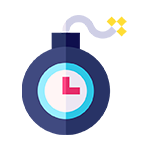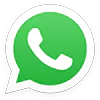Technological advances have significantly changed the healthcare industry in recent years. It has brought about a drastic improvement in patient care. Simultaneously these advances have also changed the role of nurses and doctors. Today, a nurse’s job is way different than what it was ten years ago. As nurses become more educated, they can take on expanded roles and help top healthcare facilities transform patient outcomes.
Table of Contents
Re-Envisioning Nursing Education
In the modern scenario, it’s critical to reconsider how to educate the budding nursing workforce. Nurses today stand at the forefront of innovative, evidence-based solutions in countries such as the US. So, nursing students must have the skills to embrace new technology and not shy away from exploring diverse approaches. It’s only with a good nursing education that quality outcomes can be obtained.
Students seeking nursing assignment help grasp the changing nature of the nursing field. The enhanced knowledge paves the way for students to turn into successful nursing professionals capable of meeting the needs for quality and accessible care.
The key goals of this new vision for nursing education include the following.
- Future nurses should be prepared to handle not just acute care settings but also communities.
- Robust support to nurses to thrive on the frontlines and create solutions to mend a fragmented care delivery system.
- The nursing workforce should cater to patients in all geographic environments. This will prevent instances of mal-distribution of care providers.
- A competency-based model for nurse education foster greater achievements and outcomes.
- Nursing schools should offer practice programs for entry-level and advanced nursing graduates. It will address the concerns of professionals with specialized knowledge, such as elderly care, trauma care, and woman’s health.
- There should be an increase in virtual learning and assessment.
- To promote high-quality learning and expertise, regional consortia of nursing schools must collaborate with nursing schools in offering core and elective courses.
- Nurses should have a robust knowledge of current and new technologies.
What Are the Advances of Nursing Science (ANS) Criteria for Research?
Every nursing student is aware of the ANS journal. It features innovative ideas in nursing that challenge prior assumptions and presents stimulating perspectives. To build a strong career in nursing science, you must present yourself as an authority in the field of specialization.
ANS encourages logical, meaningful, and unique research studies from nursing students.
Here are the key conditions that every student’s article should fulfill.
1. The submission must be fully original
The editors verify the uniqueness of your submission through advanced software, CrossCheck/iThenticate. This software compares your submission to its database and articles published on the internet and PubMed. It also checks your work for redundancy or self-plagiarism. It is critical for the writer to cite texts from their earlier published works.
2. Your submission shouldn’t be under consideration for publication elsewhere
You cannot give an article to Advances of Nursing Science (ANS) if you’ve also submitted it elsewhere. During the submission process, the management asks you to verify it. It’s crucial to disclose whether your manuscript drafts have been posted elsewhere in your cover letter.
3. Indicate whether your project had human participants
ANS wants to ensure that the procedures you use for research or testing are ethical. In case your submission is on a project where humans participated, it’s essential to disclose it in the text.
4. Description of the methods and quality standards
Every writer’s work should clearly describe the methods and the quality standards used. If you submit research reports, adhere to the guidelines given by the EQUATOR network. For observational studies, writers should use the STROBE statement. In the case of meta-analyses and systematic reviews, PRISMA guidelines must be met. For qualitative studies, COREQ guidelines should be adhered to.
5. The submission should fulfill English language standards for professional publication.
The articles in Advances of Nursing Science (ANS) are in English, which meets the parameters of professional publication. If you need more information on this, visit the official ANS website.
Ongoing Advancements in the Nursing That Students Should Know
By now, you must be aware of the dynamic nature of nursing. If you are not familiar with the different advancements, you cannot hope to contribute anything significant. Here are the salient advancements in the nursing industry to explore and research.
Telehealth
A robust communication technology, telehealth aims to deliver long-distance patient care via tablets, smartphones, and electronic charts. This cutting-edge technology allows nurses to monitor chronically ill patients through video chats or provide care in remote settings. It eliminates the hassles of distance, transportation, and keeping a certain number of beds in a hospital.
Not only that, but telenursing is also a cost-effective option for patients as it lets them self-test, structure treatment sessions, and make themselves fit well into their caregiver’s workflow.
Nursing informatics
Nursing informatics blends nursing science with data management and computer science. This advancement detects, manages, and conveys care or provider data with insights into patients and the medical practice in general. You may be familiar with electronic medical records that collect patient data from various entry points.
The EMRs gather the data into a centralized platform that offers a complete picture of the patient. This data can then transition between hospital facilities and teams. Nursing informatics not only facilitates complete diagnosis and targeted interventions but also lets providers identify broader public health trends. Thus, it results in significant health outcomes for various population groups. If you are searching for good nursing research topics, this can be the one to study.
Smart alarm systems
It’s another breakthrough advancement in nursing. It’s common to find alarms beeping from patient rooms in a hospital setting. Through them, the patient conveys their discomfort. However, often the alarms are false and only go on to waste the nurse’s time and productivity.
Smart alarm technology eliminates this issue. It monitors a patient’s vital signs, making it easier for nurses to monitor patients. It also measures physiological indicators, and an alarm only rings if there’s really a need. Thus, smart alarm technology makes nurses more efficient.
Technology helps nurses handle patients safely
Did you know that over 2,400 nurses experience injuries while lifting patients? Worse, most injuries that they sustain are debilitating. The problem is particularly pronounced in the case of a larger-framed patient and a smaller nurse.
But the Veterans Administration has successfully resolved this problem by creating a program that trains nurses to handle every kind of patient safely. Nurses can now leverage lifting technology through special devices in their patient rooms. It has significantly reduced nursing injuries.
Patient identification technology
Patient identification is not an easy task. In fact, preventable medical harm leads to nearly 100,000 deaths yearly, according to research. Identifying patients also leads to diagnostic errors and general discomfort for doctors and patients. But patient identification technology has been at the forefront of reliably identifying patients and reducing medical blunders.
Be it relatively old barcoded patient wristbands, sophisticated radio-frequency identification tags, or palm vein scanning. These innovative approaches streamline the task of identifying patients, securing patient data, and saving exorbitant medical costs.
Considering any of these areas as your research subject would be a good idea. You can seek online nursing assignment help to understand a topic in detail.
The Impact of Advancements in Nursing on Specialized Care
The technology impacting the nursing domain has applications that extend to different specialties. The following areas of concentration showcase the impact of advancements in specialized care.
Psychiatric mental health
This area leverages cutting-edge psychotherapy techniques to impart care to patients with mental health issues. Artificial intelligence is one of the critical ways in which nursing advancements are enhancing psychiatric mental health approaches. The technology aids in diagnosing PTSD in veterans via voice analysis. Thus, nurses can use it to create a robust healthcare plan for this population.
Pediatrics
One of the major challenges of pediatric nursing is the difficulty of proper diagnosis. It stems from children not sitting still like adults. But recent breakthroughs in magnetic resonance imaging have led to the emergence of flexible receive coils. They facilitate accurate readings for those unable to sit still. Besides providing accurate data, it simplifies the process of data collection by nurses for creating care strategies. You can connect with nursing assignment help to find resources related to pediatric nursing.
Women’s Health
Various innovative devices have come about in the women’s healthcare domain. From wearable breast pumps to digital birth control, there certainly is a shift from the existing landscape. Wrist wearables capture temperature changes and enable nurses to record them. These changes are associated with women’s menstrual cycles and track fertility. Thus, it helps nurses determine efficient reproductive strategies for women.
Adult-Gerontology
This area focuses on health challenges for elderly patients. It includes palliative care and chronic illness. Elderly patients have several ailments, leading to various challenges in care delivery. The technology to monitor the health of elderly patients simplifies the process of monitoring the conditions of such patients.
These technological advances let nurses impart highly streamlined care and convey the health status of an aging patient to their family in more detail.
Midwifery
There has been a reformation of maternity services, especially in countries like the United Kingdom. The effort is to develop a more woman-centric model of care after years of fragmented and depersonalized care. Various monitoring technologies like ultrasound scans, oxytocics, labor augmentation, and electronic fetal monitoring have revolutionized maternity services.
The roles of prenatal, pediatric, neonatal, and psychiatric nurses are fast changing. You can research the technologies reshaping midwifery care deeply and use it as one of the nursing research topics.
Smart beds
Smart beds leverage advanced medical technology and connect important data wirelessly and directly to patient care providers. These beds monitor the blood pressure, heartbeat, oxygen levels, and body temperature of a patient and transfer them to a central node. Nurses and care providers can access this node remotely.
Final Words:
As you can see, the nursing field is witnessing some innovative advances. The need of the hour for budding nurses is to understand new approaches and acquire the skills to adapt. You must prove yourself as an authority in your specialized field to excel. Submitting a paper to Advances of Nursing Science (ANS) is a great first step. If you need assistance in creating your thesis, consider taking professional help.
 Santa Clara, CA 95050
Santa Clara, CA 95050 





